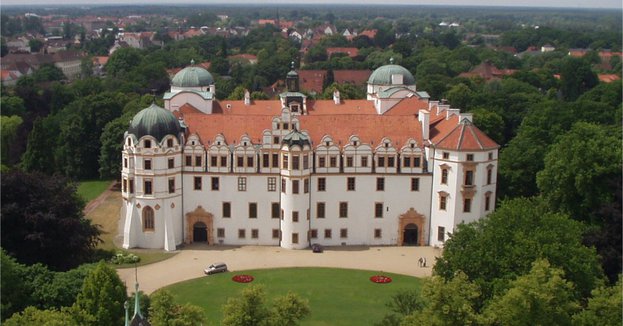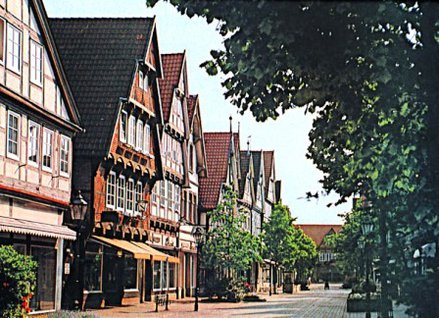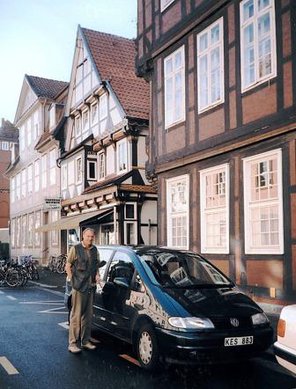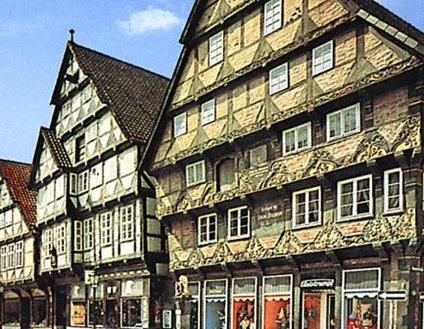
CELLE
Costa del sol bjuder på många dina utflyktsmål.
Läs om mina förslag på vackra bergsturer.
Välkommen till min webbsida som handlar om trivsamma platser i Europa, utflykter i Andalusien och sköna promenader i Stockholm.
Klicka på det som intresserar dig!
Trevlig läsning


Celle 21 km east of exit 52 Mellendorf (A7) north: 45 Soltau Süd; south: exit 52 /11 km/
Celle is like a treasure house out of a fairy tale and well worth a detour.
The town has everything a visitor could wish for. It boasts a charming town centre with many notable sights, and on its western flank it has a castle surrounded by a leafy park. Towards the south lies the well-kept French Park and the rest of the old town is embraced by the river Aller with tree-lined walks.
HALF-TIMBERED HOUSES GALORE
Celle is first mentioned in the documents of the year 990 as “Kellu”, meaning habitation by the river. This place was situated a few kilometres from modern Celle and did not have the best conditions for river traffic. So Duke Otto the Stern simply founded a new town a little bit further downstream and let the inhabitants of the old town move to the new one. This happened in 1292 and in that same year a stronghold was built where the castle of today now stands. Around this stronghold the town grew up and the building of the town church also began during this time.
In 1378 Duke Albert gave Celle the distinction of residential town of the duchy of Lüneburg and from then on the town was gradually strengthened and its beauty enhanced more and more. During the following centuries Celle’s significance was steadily rising and many of the decorative, half-timbered houses, which give the town its unique character, were built in the 16th and 17th centuries. In the old town centre alone there are no fewer than 480 of these with a further few hundred outside it.

“SWEDISH” CRISPBREAD

However, the last Duke dies in 1705 and this brings the golden era to an end. But life goes on, and a few years later the town became head quarters for the Supreme Court. At the Celle Peace Treaty of 1679, signed by the duchy of Lüneburg on the one side and Sweden and France on the other, the Swedish King Karl XI, much to his displeasure, was forced to relinquish a few minor regions which had been conquered during the 30 years war.
In the 18th century Celle’s famous stud-farm was set up, where now great horse shows are being held every autumn. Latterly, they have also taken up the baking of “Swedish” crispbread in Celle, which is distributed as Wasa Knäckebröd throughout the EU region.
CASTLES AND MUSEUMS
In Celle the castle is right at the centre of things and here they put on theatre performances in the old baroque theatre from 1674, the oldest remaining theatre in Germany. The castle began life already in the 13th century, but was given its existing appearance during the 16th and 17th centuries, now displaying a majestic façade in Weser Renaissance. Opposite the castle is the Bomann Museum, a local history museum with a well-kept farmyard from the 16th century as its main attraction.
Here is also a square called Die Stechbahn, where in former times jousting tournaments were held, with the town church towering over it. A little peek into the Kaland lane which runs from this square will evoke a romantic notion of medieval times. Here are many beautifully carved half-timbered houses, of which the old Latin School is a prime example. From Stechbahn it is only a stone’s throw to Am Markt, the hub of the town. Here stands the handsome Town Hall, rebuilt in the Renaissance style during the 16th century, in the midst of a fine collection of richly decorated half-timbered houses. And in all this medieval ambience there is an abundance of tempting restaurants and alluring street cafes, which are only too easy to nip into!
Magnificent palace façade in Weser renaissance
Half-timbered houses everywhere - you must be in Celle
Richly decorated façades